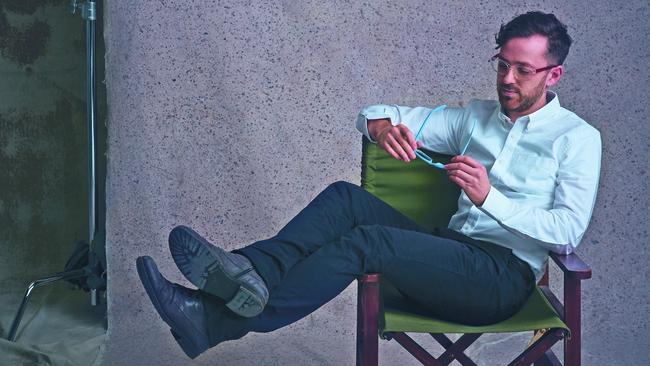Jason McDermott & Bruce Jeffreys, Dresden Optics
It took a couple of shortsighted guys to take on the eye-watering cost of prescription spectacles in Australia.

For those used to shelling out several hundred dollars for prescription glasses, the price of a pair of single-vision reading or distance specs from Dresden Optics when the company opened its doors in Newtown, Sydney, in July 2015 was a thrilling surprise: $49.
“We were just trying to find a solution for ourselves, as customers,” says Bruce Jeffreys, who founded Dresden Optics with his friend and fellow specs wearer, Jason McDermott. “The last impression I want to give is that we knew that there was such a big problem right here in Australia, with people unable to afford what’s a basic medical necessity. We went into it looking for something that would work for us: strong, reliable, durable, affordable glasses.”
Jeffreys is the maverick who disrupted the auto industry when he and another mate co-founded a car-share service in Sydney in 2003. After selling a majority stake in GoGet to Archer Capital in 2014, he sank $4.8 million of his share into launching Dresden to upend what he calls the “staggering, indefensible margins” common across the optometry retail industry, and to promote local advanced manufacturing.
He and McDermott met when the latter was interviewing him for a podcast. “Bruce was winding down his involvement with GoGet and had a head bristling with ideas and wanted to find someone to work with him,” says McDermott. “We started on a few concepts, ranging from food production to education, and Bruce had this idea for an eyewear company with accessibility as the number-one value – it was the runaway project that we couldn’t say no to.”
To make its modular, colourful, lightweight nylon frames, Dresden partnered with a western Sydney manufacturer best known for its car badges, a business in a death dive along with Australian auto manufacturing. Astor Industries was remaking itself and, says Jeffreys, open to trying all sorts of things to manufacture the frames, which come in one style in several sizes and easily interchangeable arms, and are designed so that the Zeiss lenses pop in and out easily. Most of Dresden’s single-vision glasses can be made up on the spot.
Dresden, now the only manufacturer of prescription eyewear frames operating in Australia, also received a $2.7 million grant from the federal government’s Advanced Manufacturing Fund to refine its process of turning waste plastics – from milk-bottle tops to the dreaded “ghost nets” that are the scourge of marine life – into specs. “We want to make that the majority of our production, rather than using virgin plastic,” says Jeffreys.
There’s also an Australian manufacturing link in Dresden’s partnership with German industrial giant Zeiss, which makes its lenses. Jeffreys explains that plastic prescription lenses were invented in Adelaide in the late 1950s, using a plastic known as CR-39. SOLA (Scientific Optometric Laboratories of Australia), the Australian company formed to make and market the lenses, was “at one time the world’s biggest manufacturer of plastic prescription lenses”, he says. “They had factories all over the world. They were sold to Pilkington Glass, eventually almost went broke and were bought by Zeiss in a fire sale.”
Today, the “fantastic” general manager of Carl Zeiss Vision Australia, Hilke Fitzsimons, is a former SOLA employee, and Jeffreys regards “our partnership with Zeiss as a bit of a spirit
of that original Australian lens company. We’re trying to turn around what’s been a very strong narrative of Australia as a commodities exporter.”
To expand Dresden’s reach, Jeffreys and McDermott designed a mobile optometry trailer that’s been on the road in partnership with Vision Australia and more recently with HCF (which made Dresden one of only three preferred no-gap providers and has it in its scale-up accelerator program, Catalyst). “There’s a revolution in the quality of portable diagnostic tools, which means we can take all this lightweight, hand-held equipment on the road and bring the eye doctor to you,” says McDermott.
The trailer has been out to indigenous and regional communities, but Jeffreys is keen to dispel any suggestion they’re doing charity work. “It’s just normal work, we’re doing it commercially and we’re making money … the current industry is simply too expensive, so people who can’t afford glasses go through a charity program – or they go without,” he says. “Our approach is: glasses have been around for a long time, everyone can afford them, and we’re making it so they can.”
Dresden’s growth inside three years is testament to the need: five branches in Sydney, a third opening in Melbourne this month and the first international store up and running in Toronto, Canada. In June, it announced a $4 million cash injection from the Investec Emerging Companies fund, which Jeffreys says will help them expand to “sell in developing countries as well as rural and regional areas here at home … Our challenge is to get it out there … we don’t see any limit to it in terms of demand”.

